Solutions for Nose Reshaping
Nonsurgical Nose Reshaping
Leesburg | Loudoun | Ashburn | Virginia
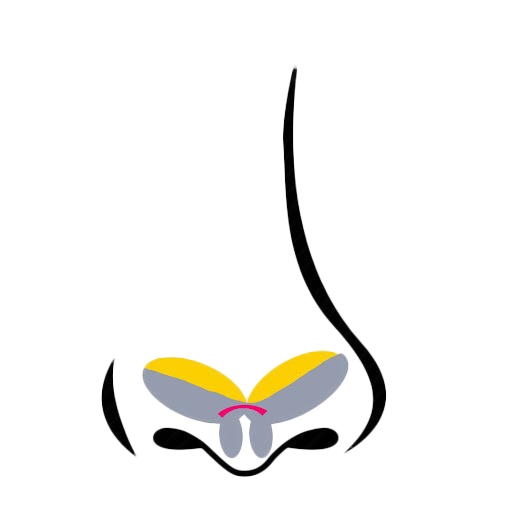
Reshaping the nose is the third most common plastic surgery procedure, following breast augmentation and liposuction. Most people considering this procedure think that they will need a surgical correction. This page describes the nonsurgical options to modifying the shape of the nose.
Dr. Chang in Northern Virginia was one of the pioneers of the procedure over 20 years ago. He demonstrated that a large percentage of patients would rather choose a nonsurgical nose reshaping procedure if they had known it was available. This is particularly true for patients that need more height to the nasal profile or adding more projection and narrowing of the nasal tip. This is commonly seen in Asian patients as well as patients of color.
Dr. Chang made a name for him as a national expert in correcting nasal deformities after hundreds of nasal correction procedures. Many of these corrections can be performed using techniques for the nonsurgical rhinoplasty procedure. Filler can be molded and artistically sculpted with the nasal tissue to give beautiful and clean nasal contours.
- Liquid nose job
- Nonsurgical nose job
- Liquid rhinoplasty
- Nonsurgical rhinoplasty
- 75% of nose jobs were performed in women.
- 14% of nose jobs were performed in patients between 13-19 years old.
- 50% were performed in patients between 30 and 40 years old.
You are a good candidate for a nonsurgical nose job if you are over 16 years of age and otherwise healthy. Facial growth and maturity should be complete.
You can treat almost any problem with a nonsurgical nose job, that you would be done with a surgical nose job. A nonsurgical nose job however is mostly recommended for patients that have nasal features that are either too small or too flat.
You are a candidate for a Nonsurgical Nose Job if:
- You are open to a result that will last only 1-2 years
- You have a flat nasal bridge or nasal profile ( as seen in Asians )
- You have a broad or bulbous nasal tip
- You have a cleft nasal tip ( separation of the nasal tip cartilages )
- You have a “minor” nasal hump
- You have a minor bend or depression of the nasal cartilage often seen after surgery
Nasal Tip
- A wide nasal tip, also called a boxy nasal tip, is a commonly requested concern for patients. The shape and size of the nasal tip is created by paired nasal cartilages that are individually wide and separated from each other. The outline of your tip cartilage can often be better visualized by pushing the tip upward while looking at the tip cartilage in the mirror.
- The treatment strategy is to narrow the front to back width of a wide tip cartilage in addition to joining the left and right nasal cartilages in the midline.
Nasal Hump
- The nasal hump is seen more commonly in certain ethnicities including patients from the middle east and around the Mediterranean. Some patients refer to their features as a Roman Nose.
- The nasal hump is composed of a tall nasal bone that is contiguous with a tall nasal cartilage.
- The treatment strategy is to file down the bone and cartilage with a special filing instrument or chisel. Filing down the nasal hump will sometimes result in a flat top surface to the nose, particularly if the hump is particularly tall. Imagine taking off the top of a triangle. If the top surface looks overly flat, the nasal bones are broken at the base of the triangle and pushed inwards to close the gap at the top.
Wide Nasal Bones
- Wide nasal bones are addressed by breaking the nose and pushing the bony side walls inward. Imagine pushing the sides of a triangle towards the midline of the triangle.
Wide Nostrils
- Wide nostrils are commonly seen in certain ethnicities including asians and patients of color.
- The treatment strategy is to perform a “wier excision” that can decrease the circumference of the nostril. Imagine the nostril as a circle where the base of the circle is located where the nostril joins the cheek. A wier excision will remove a small wedge of the nostril at the base followed by closing up the smaller circle. The scar is hidden in the crease between the nostril and cheek.
Flat Nasal profile
- Flat nasal profile is the opposite of a nasal hump. This finding is commonly seen in certain ethnicities including asians and patients of color.
- The treatment strategy is to build up the nasal profile using facial fillers, cartilage grafts, or implants. Adding facial fillers are the easiest option and an option that we perform daily because it does not require surgery.
- Voluma, juvederm, or radiesse are common facial fillers. These are injected in the office in a 10 minute procedure with no downtime
- Patients having surgery for other cosmetic concerns will often opt for septal cartilage grafts or implants created for this purpose.
Juvederm Ultra– Juvederm Ultra is a hyaluronic acid gel that will last up to 1 year. This is an excellent filler for anywhere on the nose including the nasal bridge and the nasal tip
Voluma– Voluma is a cousin of Juvederm Ultra. It is a hyaluronic acid that will last up to 2 years. This is an excellent filler for anywhere on the nose including the nasal bride and the nasal tip
Radiesse – Radiesse was one of the original cosmetic fillers used for the nonsurgical nose job. It is made of calcium hydroxyapatite gel. It is an excellent choice for the nasal bridge as it resembles the structure of bone, but can cause granuloma formation at the nasal tip. It can last up to 2 years if placed over the nasal bridge.
- A Nonsurgical Nose Job (Also known as a liquid nose job)
- Open Rhinoplasty
- Closed Rhinoplasty
You have to be open to a result that will last only 1-2 years (fillers will last up to 2 years).
- You have a flat nasal bridge.
- You have a broad or bulbous nasal tip.
- You have a cleft nasal tip.
- You have a minor bend or depression of the nasal cartilage as is seen after some nasal surgeries.
You are NOT a candidate for a nonsurgical nose job if:
- You are looking for a permanent solution to your cosmetic nose complaints
- Your main complaint is a nasal hump or bump over the nasal bridge
- Your main complain is a very broad or bulbous nasal tip
- You are looking to narrow the nasal bones or nostrils
You are a better candidate for a surgical rhinoplasty than a nonsurgical rhinoplasty if:
- You are looking for a permanent solution to your cosmetic nose complaints.
- You are open to a recovery that will require you to be out of work for at least a week.
- You are open to the surgical recovery and potential complications.
- Your main complaint is a nasal hump or bump over the nasal bridge.
- Your main complain is a very broad or bulbous nasal tip.
- You are looking to narrow the nasal bones or nostrils.
You are a candidate for nose reshaping if:
- You think you have a nasal hump
- You think the nasal tip is too large or bulbous
- You think the nasal bones are too wide
- You think the nostrils are large or wide
- You think your nose is crooked
- You think your nose is too flat
Pain After Rhinoplasty
Recovery after a nose job depends on what kind of procedures were performed. Contrary to popular belief, nose reshaping procedures are not particularly painful and most patients will need narcotic pain medication for more than a day or two. If a nasal hump or osteotomy ( to narrow the nasal bones ) is performed, an external splint is on for 7-10 days. If a septoplasty is performed, internal septal splints are placed for 7-10 days. If a septoplasty is not performed, the nosed is packed with a non-stick dressing for 2-3 days. Some minor bleeding is expected for 1-3 days.
Return to Work After Nose Job Surgery
Most patients will :
- Most patients will be “mentally capable” of work in 3-5 days
- External splint ( if needed ) is removed in 7-10 days
- Internal splint ( if needed ) is removed in 7-10 days
- Nasal packing is removed in 2-3 days
- External sutures are removed in 7-10 days
- Internal sutures are absorbable by may need to be addressed in 7-10 days
- Clean suture line with peroxide IF there is crusting and then apply ointment 2-3x per day
Non-surgical rhinoplasty – Non-surgical rhinoplasty is a technique that Dr. Chang pioneered in Virginia in 2001. He is an expert injector who has treated thousands of patients using this technique. It is ideal for patients with flat nasal bones, small nasal humps, small depressions, and wide nasal tips. The procedure is performed by strategically injecting fillers and provides immediate results that can last up to 2 years. In many patients, this procedure allows patients with minor issues to avoid the time, risk, and expense of surgery
Closed Rhinoplasty – The two major surgical techniques for performing a nose reshaping procedure are the closed and the open rhinoplasty techniques. aDr. Chang performs both depending on the nature of your issues. Closed procedures have no visible external scars. An incision is placed inside the nose and all the work is performed using this incision. This procedure is ideal for patients who do NOT need work on their nasal tip cartilages. It is ideal for patients who only need work to either reduce a nasal hump or narrow the nasal bones
Open Rhinoplasty – The two major surgical techniques for performing a nose reshaping procedure are the closed and the open rhinoplasty techniques. Open rhinoplasty procedures are performed using incisions inside the nose that extends to an surface incision at the bottom of the nose on the columella. This incision is used for patients who require work on their nasal tip cartilages, either to refine the tip, narrow the tip, or to make it smaller. The nasal bones can also be addressed through this incision.
Nostril Narrowing ( Wier Excision ) – This procedure is performed to make smaller a large or flaring nostril
Septoplasty – A septoplasty is a procedure to fix a deviated septum. The septum is the cartilage the separates the two nasal cavities. The septum is naturally straight but it can deviate with time or after a traumatic injury. The deviation can sometimes result in closing off of one of the nasal cavities, making it difficult to breath. A septoplasty can be performed to remove the part of the septum that is curved or causing the breathing problems at the same time of your rhinoplasty.

Nonsurgical Nose Job
Starts at $1200
- Procedure will take less than 1 hour
- Procedure uses local anesthesia
- No downtime
Popular Additions
Other Names for a Nonsurgical Nose Reshaping Procedure
- Liquid nose job
- Nonsurgical nose job
- Liquid rhinoplasty
- Nonsurgical rhinoplasty
You are a candidate for a Nonsurgical Nose Job if:
- You are open to a result that will last only 18-24 months
- You have a flat nasal bridge or nasal profile
- You have a broad or bulbous nasal tip
- You have a cleft nasal tip (separation of the nasal tip cartilages)
- You have a “minor” nasal hump
- You have a minor bend or depression of the nasal cartilage (often seen after surgery)
How Do You Treat The Different
Areas Of The Nose?
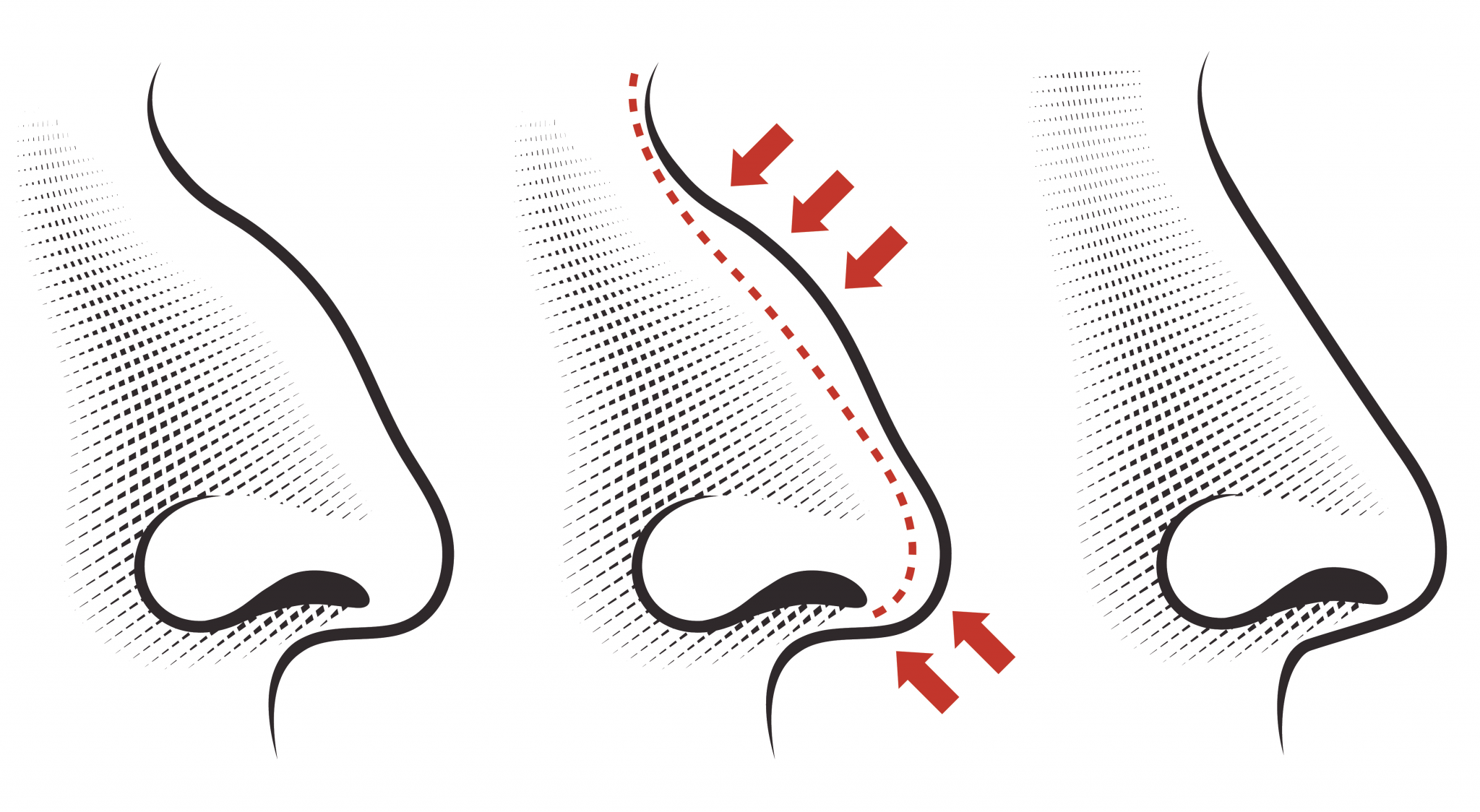
Nasal Bridge
Raising the height of the nasal bridge is one of the most common nonsurgical rhinoplasty procedures. You can use any of the 3 cosmetic fillers including Juvederm, Voluma, and Radiesse. Dr. Chang prefers Voluma because it provides satisfactory results up to 2 years. The filler is added through a very small needle directly to the nasal dorsum. You will immediately see the nasal bridge get higher as the filler is injected. The filler has numbing lidocaine in it so the procedure is not painful.
Increase The Projection Of The Nasal Tip
Increasing the projection of a flat nasal tip is the second most common case for the nonsurgical rhinoplasty procedure. The filler is added through a very small facial filler needle directly to the nasal Tip. You can actually immediately and directly see the nasal tip raise as the filler is injected. The filler has numbing lidocaine in it so the procedure is not too painful. Antibiotic is also usually added.
Narrow A Broad Or Bulbous Nasal Tip
Due to filler being an additive process, the filler can not actually narrow a broad or bulbous nasal tip; the effect is actually an optical illusion. By increasing the tip projection (see above), the nasal tip will actually appear to narrow. Obviously, if the nose is too broad, the effect will be limited. This will be determined during your consultation.
Decrease The Appearance Of A Small Nasal Hump
Again, due to filler being an additive process, the filler can not actually decrease the height of the nasal hump. The strategy, in smaller nasal humps, is to add filler above the hump toward the top of the head and below the hump toward the nasal tip. An illusion is created that makes the nose look straight. Obviously, if the hump is too big, the effect will be limited. This will be determined during your consultation.
Correct Minor Deformities Seen After A Surgical Rhinoplasty
Minor irregularities in the nasal bridge as well as the nasal tip cartilages are common after a surgical rhinoplasty procedure. Some estimate that they are present in up to 20% of surgical patients. Dr. Chang made a name for himself as a national expert in correcting nasal deformities after hundreds of nasal correction procedures. Many of these corrections can be performed using techniques for the nonsurgical rhinoplasty procedure. Filler can be molded and artistically sculpted with the nasal tissue to give a beautiful and clean nasal contour.

Rhinoplasty: Surgical vs Nonsurgical
The reasons why people want a nose job are countless. Some may simply want to improve their ability to breathe better, whereas others may want to improve their aesthetic appearance.

Rhinoplasty Benefits: It’s Not Just About Being Beautiful
It can be easy to assume that all rhinoplasties take place for purely aesthetic purposes, but it is also a nose reconstruction process as well. Nose jobs can repair nasal damage or scarring resulting from burns, injuries, or genetic defects.

Check Out This Month's Specials
Find all of this month’s special offers and discounts all in one place!
Experts in Plastic Surgery
Featured Videos
Practice Overview
Experts in Plastic Surgery
Before and After Nonsurgical Rhinoplasty Images
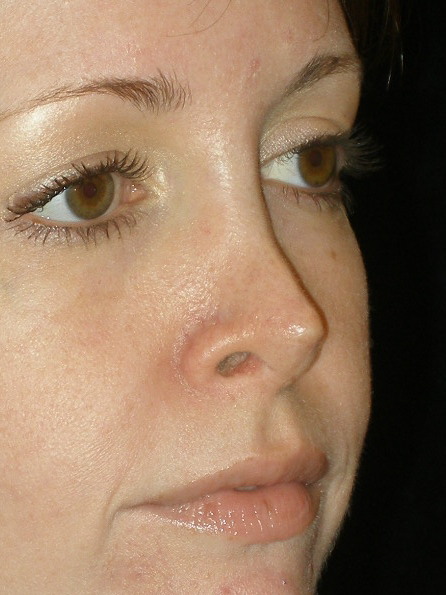
Before Non-Surgical Rhinoplasty
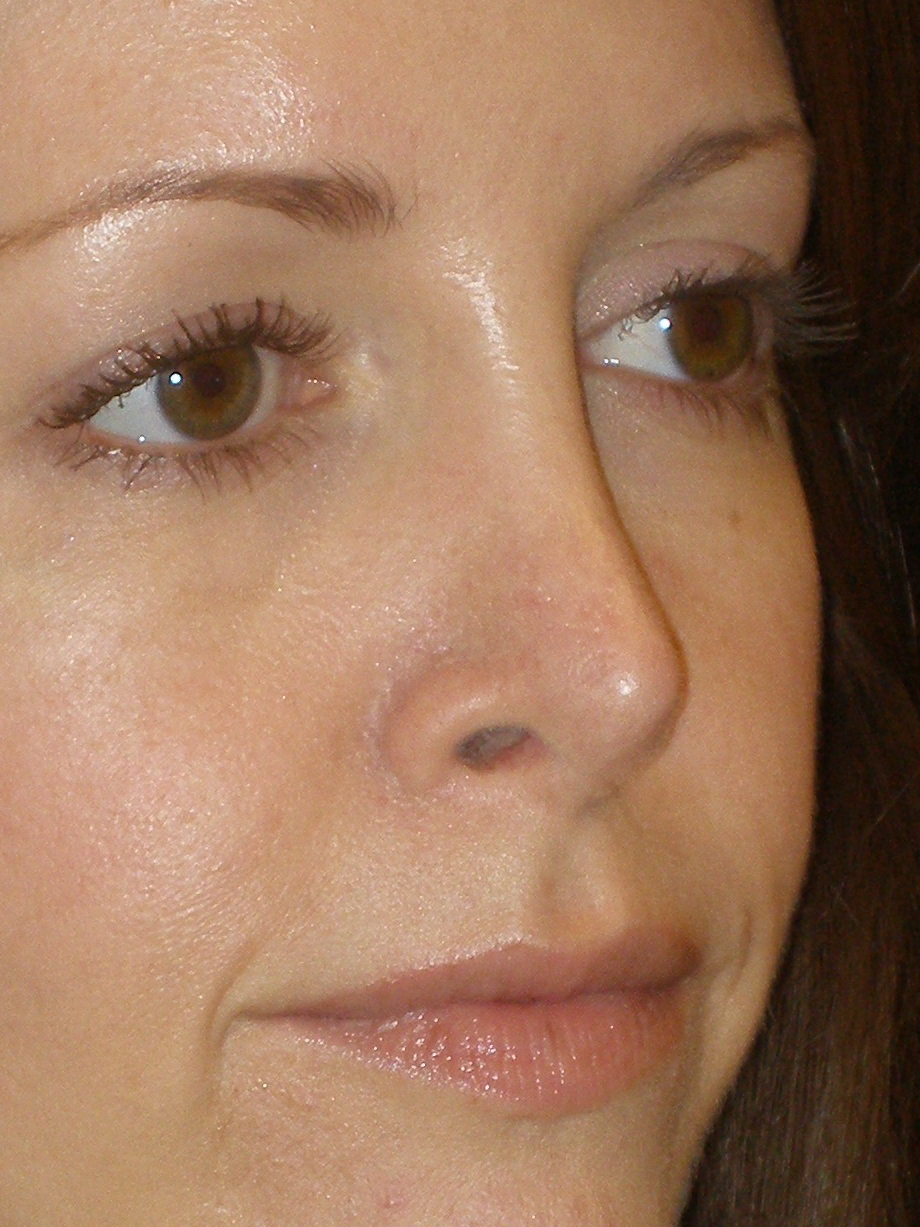
After Non-Surgical Rhinoplasty
This 23 year old woman (from Virginia) came in for a consultation with Dr. Chang, expressing that she felt she needed correcting of complications from a previous rhinoplasty. Her surgical rhinoplasty left her with severe deformities on her nasal tip cartilages. Some cartilages were bent, others were missing, the nostrils were deformed and finally, the nasal bridge was taken down too far.
Her options included complicated nasal reconstruction which would have required taking cartilage grafts from her ribs with no guarantees of success. We opted to perform a half hour non-surgical rhinoplasty procedure that built up her nasal bridge and sculpted a nice and smooth nasal tip, using Radiesse at the time because Juvederm was not yet created. Today, we would have used Juvederm XC or Voluma.
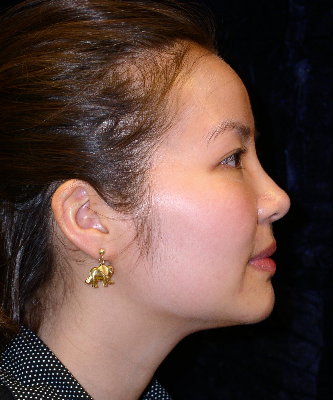
Before Non-Surgical Rhinoplasty
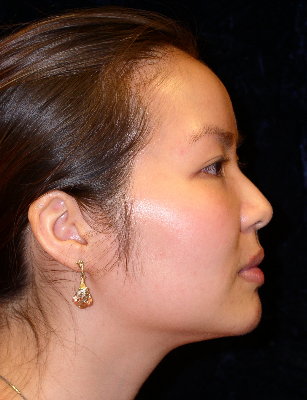
After Non-Surgical Rhinoplasty
22 year old woman (from Virginia) came in for a liquid rhinoplasty consultation. She had a flat and broad nasal bridge and tip, the perfect candidate for a liquid rhinoplasty. Her short procedure included building up her nasal bridge and adding projection to her broad and flat nasal tip. You can see that her profile was significantly improved. The procedure was performed using Juvederm for the nasal tip and Voluma for the nasal bridge.
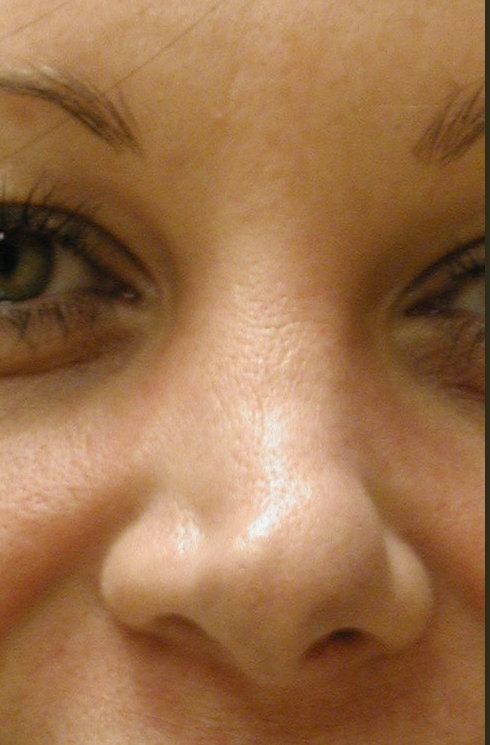
Before Non-Surgical Rhinoplasty
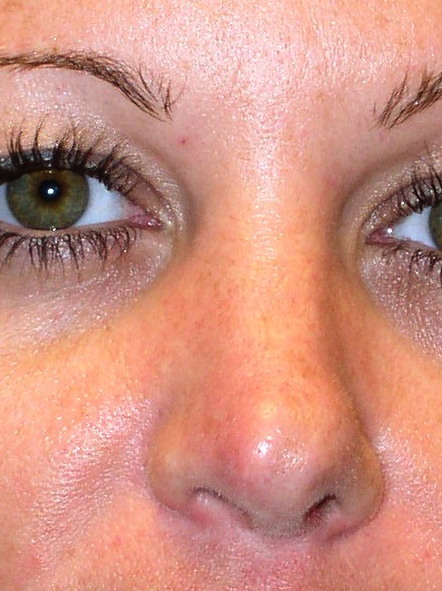
After Non-Surgical Rhinoplasty
36 year old female came in for a rhinoplasty consultation. She had a previous surgical rhinoplasty that left her with a deformed nasal tip. Surgical revision or correction would have required grafting with cartilage obtained from her nasal septum or ear, so she elected for a nonsurgical option. We injected the nasal tip with Voluma. You can see in her after picture, which was taken immediately after (still red at the injection site), that the cartilage deformity was fixed immediately.
Subscribe for monthly specials delivered to your Inbox
Experts in Plastic Surgery
Other Popular Procedures

Skin and Anti-aging
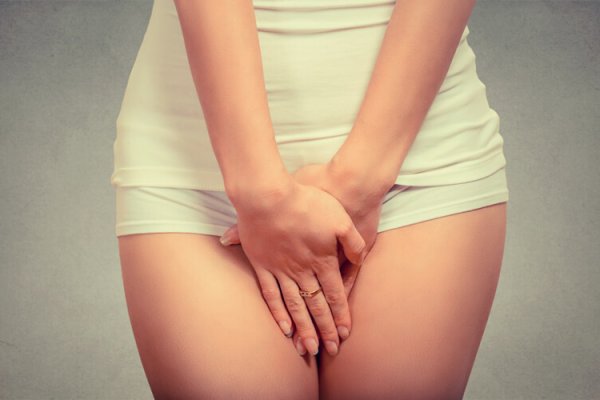
Vaginal Health
Vaginal health includes treatments for vaginal dryness, laxity, and even urinary incontinence. Common procedures include labiaplasty surgery, as well as Diva Laser Tightening.

Non-surgical Innovations
More FAQs
Dr. Chang in Northern Virginia

Dr. Phillip Chang is a leading plastic surgeon in Loudoun County who specializes in surgical and nonsurgical cosmetic procedures for the breast, body, face, and skin. He is board certified in plastic surgery by the American Board of Plastic Surgery and is the founder of Aesthetica Cosmetic Surgery & Laser Center in Leesburg, VA. Dr. Chang is dedicated to providing high-quality service that concentrates on the unique needs and concerns of his patients. He believes combining attentive care and minimally invasive techniques is the best avenue for achieving beautiful, natural-looking results. Dr. Chang is thrilled to be serving the greater northwest area of Washington, D.C. with top cosmetic care that is dependable and trustworthy.
Interested in learning more about Dr. Chang? Click here.
19500 Sandridge Way Suite 350
We are based in Leesburg, VA. Located as part of the Lansdowne medical complex. We are based directly across the road from INOVA hospital. There is ample parking, elevators to bring you to our third floor offices, and welcoming staff to sign you in.
We are proud of our surgeries and cosmetic procedures and love that our patients are happy too. They like to shout it out on Google, Yelp, Facebook, and right here on our website. Check out our reviews here.
Yes we do!
All potential patients receive either a phone, virtual, or in-consultation for free.
During the consultation we will discuss your treatment wishes and expectations. This is the time to ask us lots of questions to really understand what is involved, what the costs will be, and what is expected of you. This is also a great time to get to know Dr. Chang.
Aesthetica has received numerous awards from the Loudoun County Chamber of Commerce, New Beauty, Best of Loudoun, Posh 7 Top Picks, and Dr. Chang is internationally known for his lectures and advances in precise surgical technique as demonstrated through his unique mini-facelift procedure.
We have three exceptionally talented cosmetic nurses:
- Melanie Schwarz, RN, BSN
- Katy Down, RN, BSN
- Angela Westbrook, RN, BSN
Follow us online
Follow us on our other platform for more articles, plastic surgery images, and innovations on our social channels
